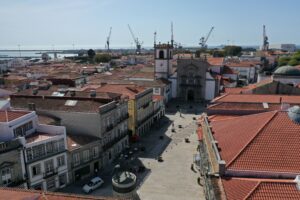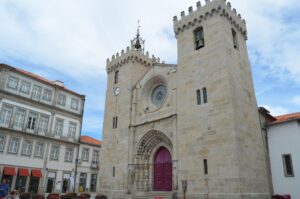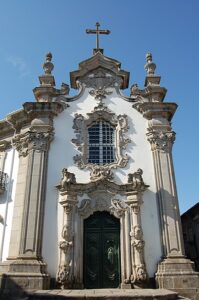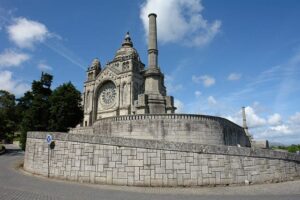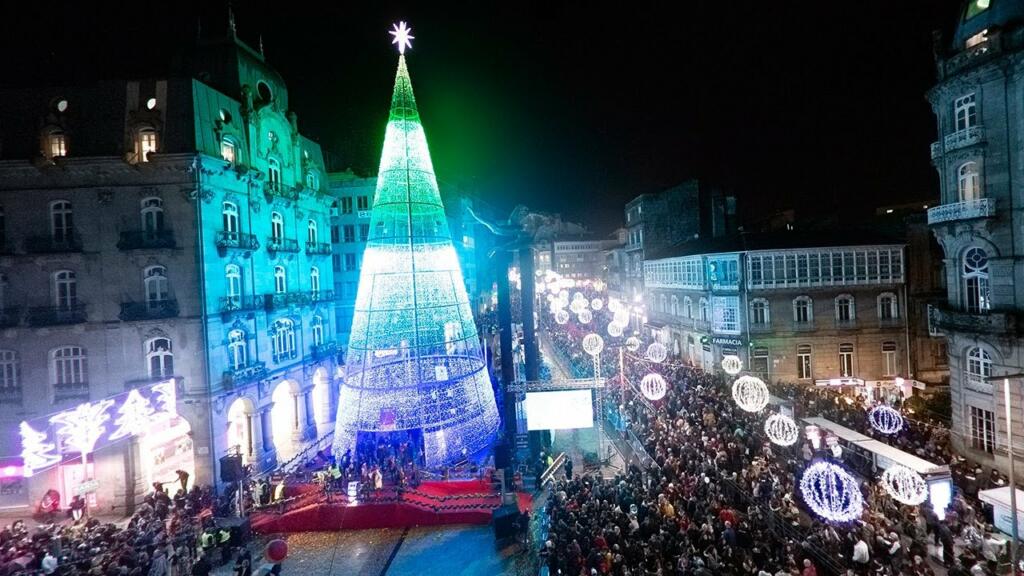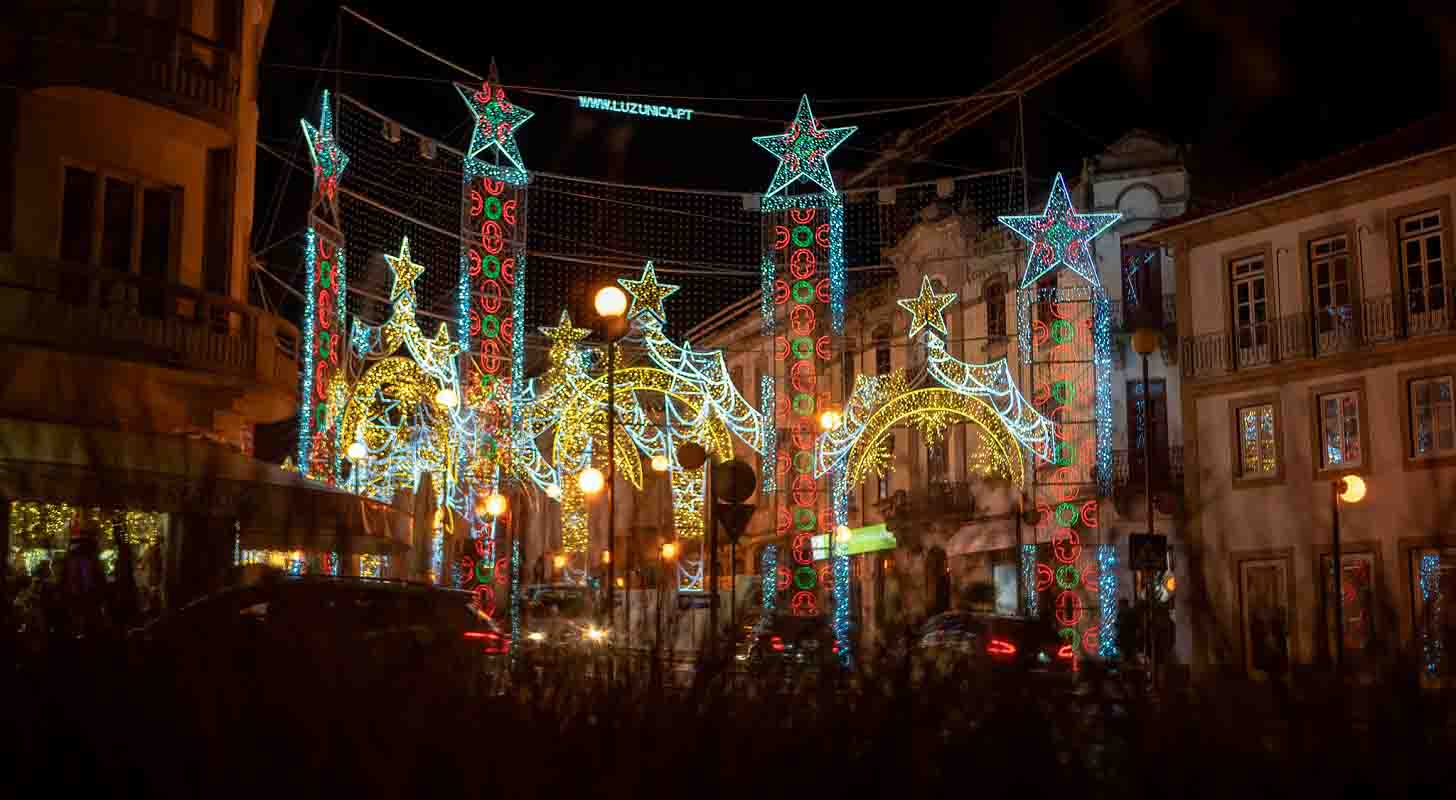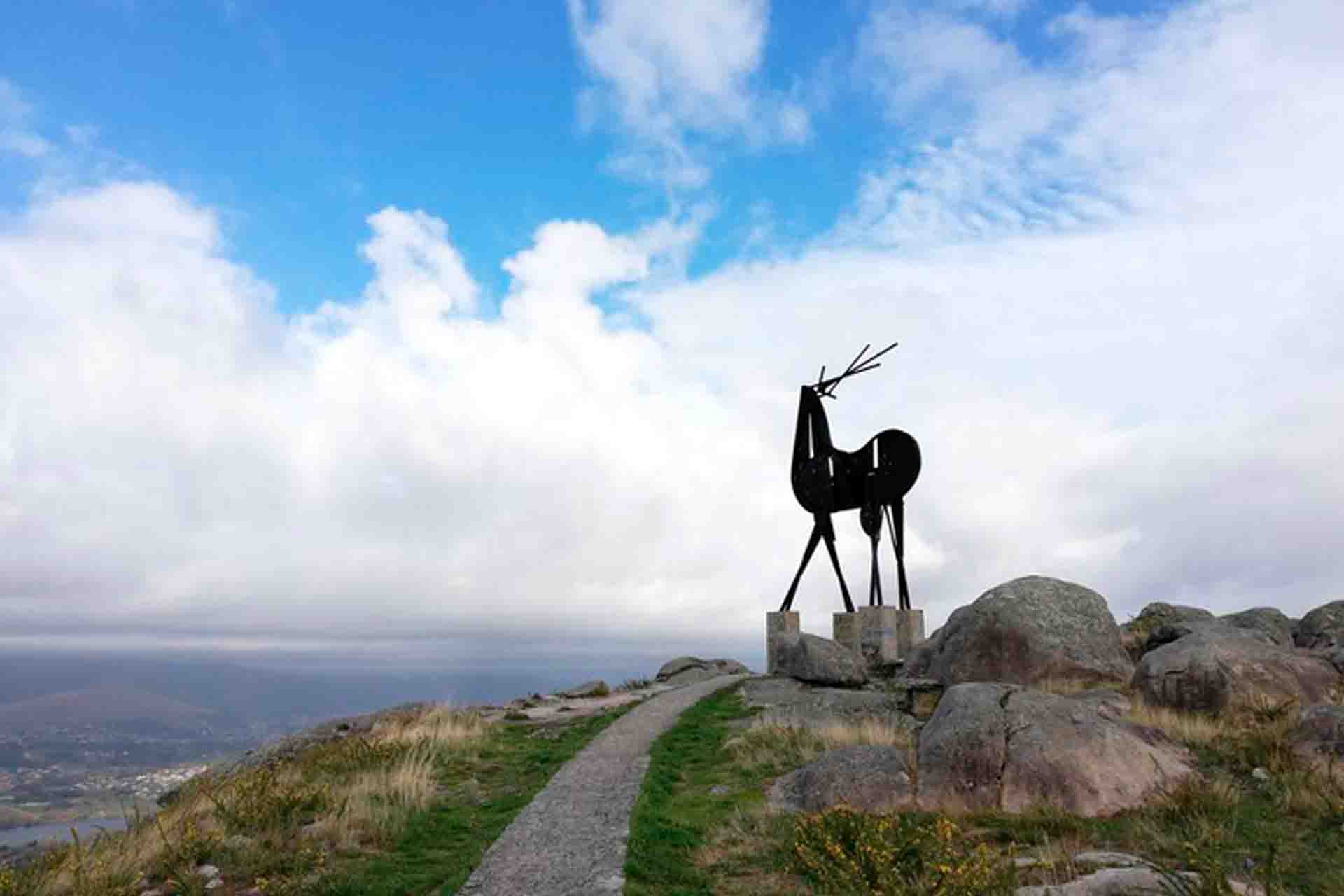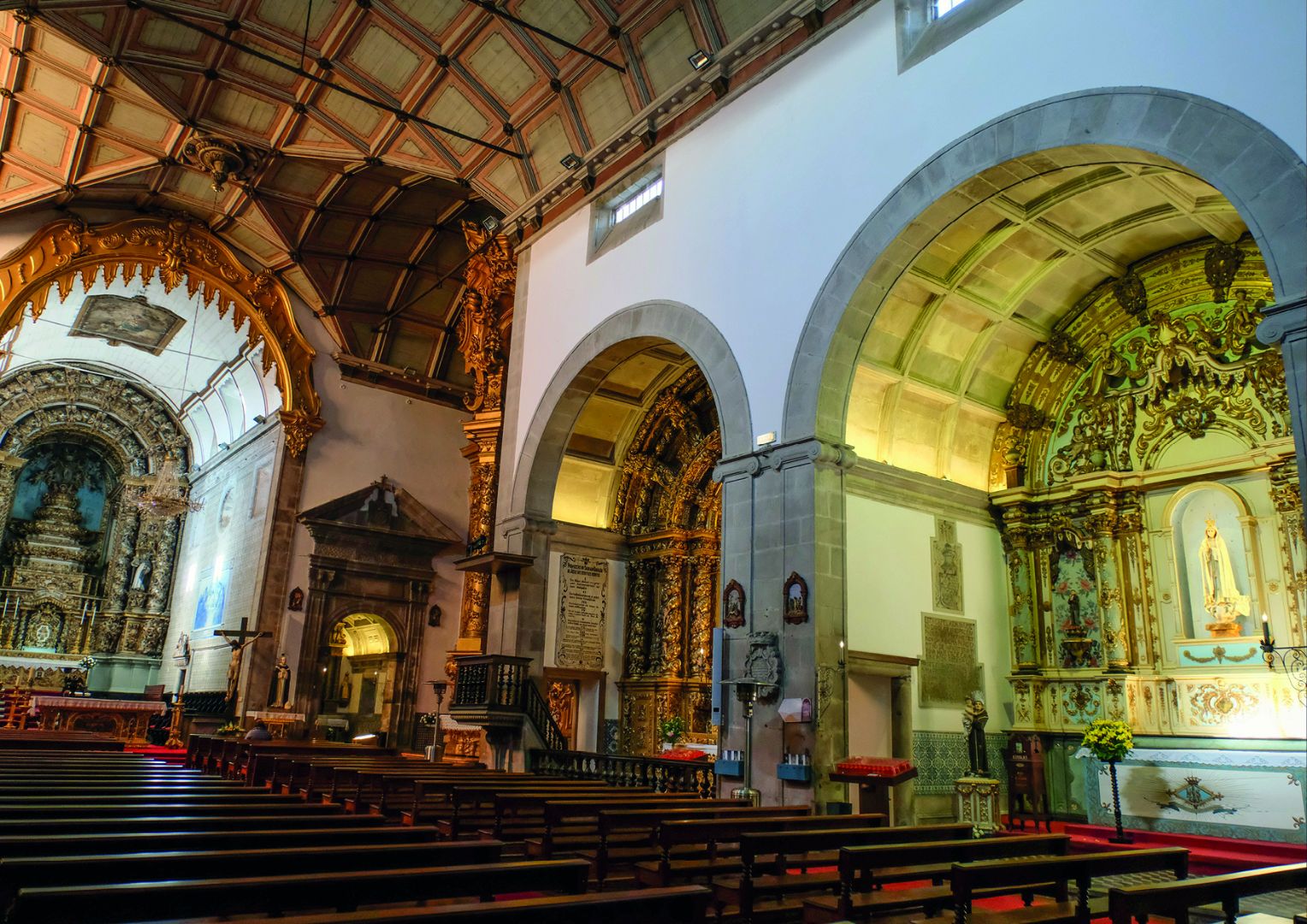
Churches in Viana do Castelo
Religion is very present in Viana do Castelo.
There are several churches, cathedrals, chapels and temples scattered throughout the city, with the aim of praising Christianity.
Among the various religious elements, there are six that stand out for their remarkable beauty. Are they:
- Church of Our Lady of Agonia
- Church of Saint Dominic
- Sé Cathedral
- Malheiras Chapel
- Chapel of Souls
- Santa Luzia Sanctuary
If you like architectural projects developed with attention to the smallest detail, you really have to visit these places in Viana do Castelo.
Continue reading this article and discover more details about each of these sanctuaries.
Church of Our Lady of Agonia
In Viana do Castelo, there is a great cult dedicated to Our Lady of Agonia.
This cult dates back to the 18th century, when fishermen were able to overcome storms and shipwrecks and arrive safe and sound from their sea voyages.
As a way of celebrating their return from the sea, the fishermen thanked Nossa Senhora d’Agonia.
To materialize this cult, in 1744, the name of Nossa Senhora d’Agonia was given to this sanctuary of Viana do Castelo, located in Campo da Agonia.
However, before 1744, this temple had already served as a tribute to other religious figures.
First, it was a chapel dedicated to Bom Jesus do Santo Sepulcro do Calvário. Afterwards, it worshiped Our Lady of Soledade. Until, in 1744, it began to pay homage to Nossa Senhora d’Agonia, a cult that continues to this day.
In its physical form, the church is baroque in style and has a whitewashed facade, with stone decorations and a portal that resembles “bat wings”.
On the main façade, there is also a stone sculpture of a titular Virgin.
Inside the sanctuary, Braga’s “carved wood” is a strong presence in the decoration of the altars and the pulpit. The interior also features a memorial of the Passion of Christ, by André Soares.
But its beauty and history do not end there.
As before, the church of Nossa Senhora d’Agonia was a chapel of pilgrimage, in the seven wings are portrayed the steps of the sacred way that gave rise to it. In addition, in this worship space there is also a sculpture of the Risen Christ and paintings of the Resurrection.
In turn, the annexes house the chaplain’s house and the Consistory room, where several portraits of benefactors are on display.
The Church of Nossa Senhora d’Agonia is, therefore, one of the mandatory places to visit in Viana do Castelo. Because better than reading the descriptions of this sanctuary, is visiting it and seeing all the details with your own eyes.
And if you visit Viana do Castelo in August, more specifically, on the 18th, 19th and 20th, you will have the opportunity to participate in the feast of Senhora d’Agonia.
This great festival includes ethnographic processions, terrestrial processions, and river processions on the Lima River with decorated boats. The streets of Viana do Castelo are decorated with carpets of flowers and there is a religious procession, where the image of Nossa Senhora d’Agonia is carried around the city.
It is the most famous pilgrimage in the region and one of the most famous in Portugal.
A beautiful tribute to be seen and experienced in first person.
Church of Saint Dominic
The Church of Saint Dominic is another of the religious buildings in Viana do Castelo that deserves to be highlighted.
This church is located in the center of the city, in Largo de São Domingos and is a 16th century temple, built during the 16th century at the behest of Archbishop Bartolomeu dos Mártires. Later, his tomb was even established in the church.
The facade was based on the Mannerist style and features granite sculptures.
The sanctuary features a Latin cross plan, arranged in a single nave.
On the sides, the nave is covered with tiles and the chancel is rectangular and has circular towers on both sides.
Inside, there are several altarpieces that deserve your attention, as is the case of the Chapel of Nossa Senhora dos Mares, the Sacred Heart of Jesus and the high altar completely covered in gilded carving. Many historians consider this altar to be a Rococo masterpiece in Europe.
Another interesting curiosity of this church is that it was beatified by Pope John Paul II in 2001.
Sé Cathedral
The Sé Cathedral de Viana do Castelo is probably one of the Portuguese sanctuaries with the most influences from the Gothic style and which preserves the Romanesque character.
Its construction dates back to the first half of the 15th century and has many similarities with some temples in Galicia, due to its external appearance of a fortified church.
The façade consists of two majestic crenellated towers, in which the Gothic portal and archivolts with carved scenes of the Passion of Christ and sculptures of the Apostles Saint Peter, Saint Paul, Saint John, Saint Bartholomew, Saint James and Saint Andrew stand out.
In turn, the interior is made up of three naves, with exquisite ornamentation and a set of armored tombs of the nobility of Viana do Castelo.
In addition to all the fantastic architecture, the Cathedral also has several chapels that are worthy of mention.
One of them is the chapel of Senhor Jesus dos Mareantes, which includes an image of the Dead Lord, acquired in England in 1593; Milanese vestments from the 17th century and a tombstone from 1404, decorated with astronomical symbols.
Malheiras Chapel
Like the Church of Saint Dominic, the Malheiras Chapel is located in the center of Viana do Castelo.
It is considered one of the most beautiful examples of Portuguese Baroque architecture and one of the best works of Minho carving in the Rococo style.
It features an elegant façade that is suspected to have been designed by Nicolau Nasoni, a famous Italian architect from the 18th century.
In addition to the elegant façade, this sanctuary has an irregular rectangular plan, consisting of a residential body, with a chapel placed perpendicularly at the far right and the kitchen at the opposite end.
Inside the chapel, an extraordinary altarpiece in polychrome carving is visible.
Chapel of Souls
The Chapel of Souls appeared in the 13th century and was the first Parish Church in Viana do Castelo.
It was the only main church in the city until the mid-15th century, when, later, the Sé Cathedral was built.
Initially, its name was Matriz Velha, but changed to Chapel of Souls because its churchyard was, until the 19th century, the cemetery of Viana do Castelo.
Another curiosity about this religious place is that Viana do Castelo was born in a riverside port located in the vicinity of this church.
From that time to the present day, the church has undergone several works. In fact, in 1719, there was a work that ended up completely changing its initial structure.
Initially, the Church of Souls had a Romanesque style. However, since the work of 1719, it has had a Baroque style.
It was quite similar to the small temples typical of the 18th century Baroque and the only Romanesque element that is still present is the arcosolium on the south façade of the main chapel.
Inside, the Chapel of Souls has neoclassical altarpieces, a painting of Our Lady with the Child and a paneling of tiles, as its main highlight.
In the sacristy and in the access corridor, it is also possible to glimpse unique and exclusive gems of this church, such as three old polychrome wooden images of the Magi Kings, for example.
It is also possible to find fine silverware, vestments, oil paintings that reveal the steps in the life of Christ and a wide range of ancient missals and “rococo” candlesticks.
An authentic relic for those who love historical elements.
If that’s your case, you really have to visit the Chapel of Souls during your holidays in Viana do Castelo.
Santa Luzia Sanctuary
It is one of the main tourist attractions in Viana do Castelo.
It is located on the top of Monte de Santa Luzia, which provides visitors with a panoramic view over the region and the entire Lima river.
National Geographic even considered this the 3rd best View in the World.
But the view is not the only beauty of this Sanctuary. There is more.
The temple itself has a beautiful architecture, making many people spend hours and hours contemplating the Santa Luzia Sanctuary.
The combination of neo-romantic, neo-gothic and byzantine styles makes this a unique sanctuary in Portugal, which only finds similarities with the Basilica of Sacré Cœur, in Paris.
On the facades, for example, the contrast between the Romanesque schemes and the classic character of the Ionic and Corinthian capitals of the columns stands out.
Already on the main facade, it is possible to see a bronze statue of the Sacred Heart of Jesus.
In turn, the interior features stained glass windows with geometric decoration and religious elements that filter the interior light of the space and make the environment very welcoming.
It also has a small high-choir, pulpits and collateral altarpieces inspired by the neo-baroque style and a chancel with mural paintings of various episodes of the Passion of Christ.
Also inside, there are several tombstones with epigraphs that reflect the order of events and the main people responsible for the construction of the Santa Luzia Sanctuary.
And, speaking of the construction of the sanctuary, there is a very curious story behind its origin.
Before this temple existed, there was a small medieval hermitage dedicated to Santa Luzia, patroness of the view.
In the 19th century, the Cavalry captain, Luís de Andrade e Sousa, suffered an eye problem and began to go regularly to the small chapel to pray in an attempt to solve his problem.
When he regained his sight, as a way of thanking the patron saint, he created the Confraternity of Santa Luzia and started to take care of the chapel. To strengthen the relationship between the population of Viana and the chapel, he ordered the construction of a road connecting the city to the hill.
From then on, and with so many people visiting the chapel, planning began on a building that would do justice to the location and privileged view of the temple and, thus, it was decided to rehabilitate it.
It was in this way that the construction of the Santa Luzia Sanctuary began.
Since then, this area of the city of Viana do Castelo has become much more active.
For example, it is in this sanctuary that the great feast of the Heart of Jesus takes place.
This party takes place on the weekend following the week in which Corpus Christi is celebrated. People go up to the top of the Santa Luzia mountain and have an outdoor mass. After mass, they have a big picnic and spend the whole afternoon together.
A great party to attend during your holidays in Viana do Castelo.
But there are many more. There is no shortage of events in Viana do Castelo for you to participate, have fun and learn a little more about the city’s culture.
However, you can only really get to know the city and its historical monuments if you come here.
Therefore, book your stay in Viana do Castelo now and have an unforgettable week of vacation.



